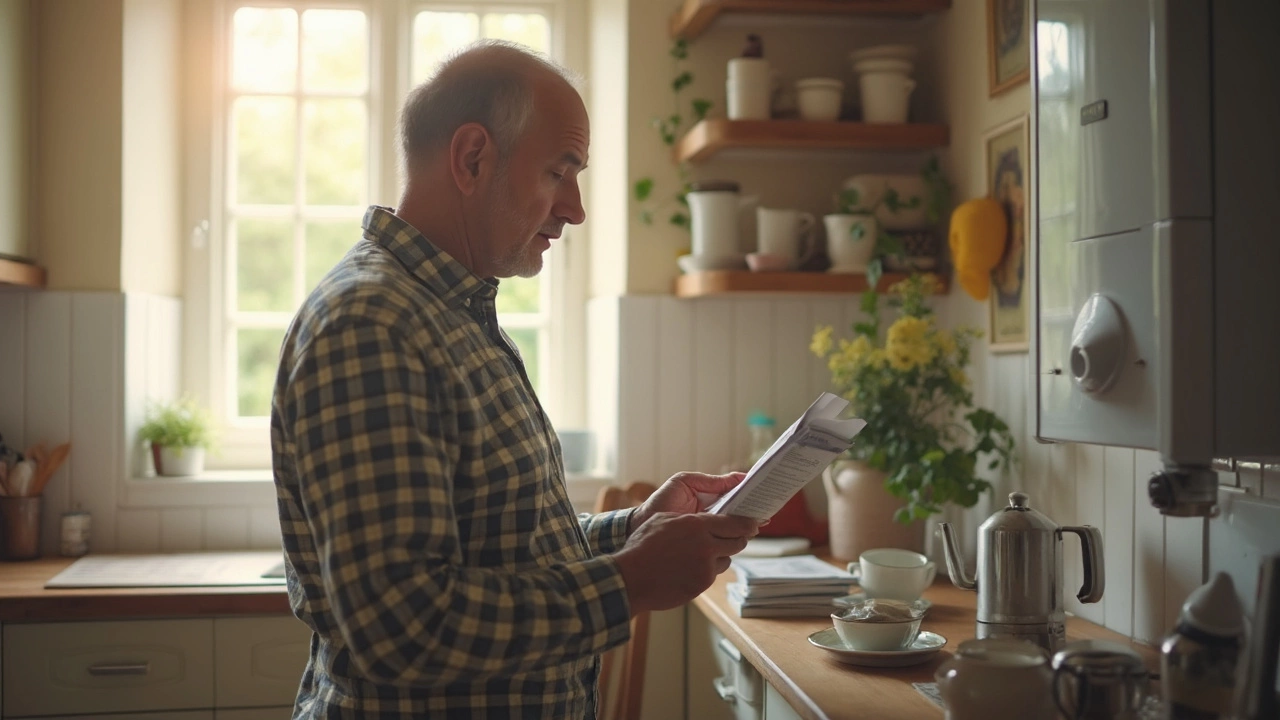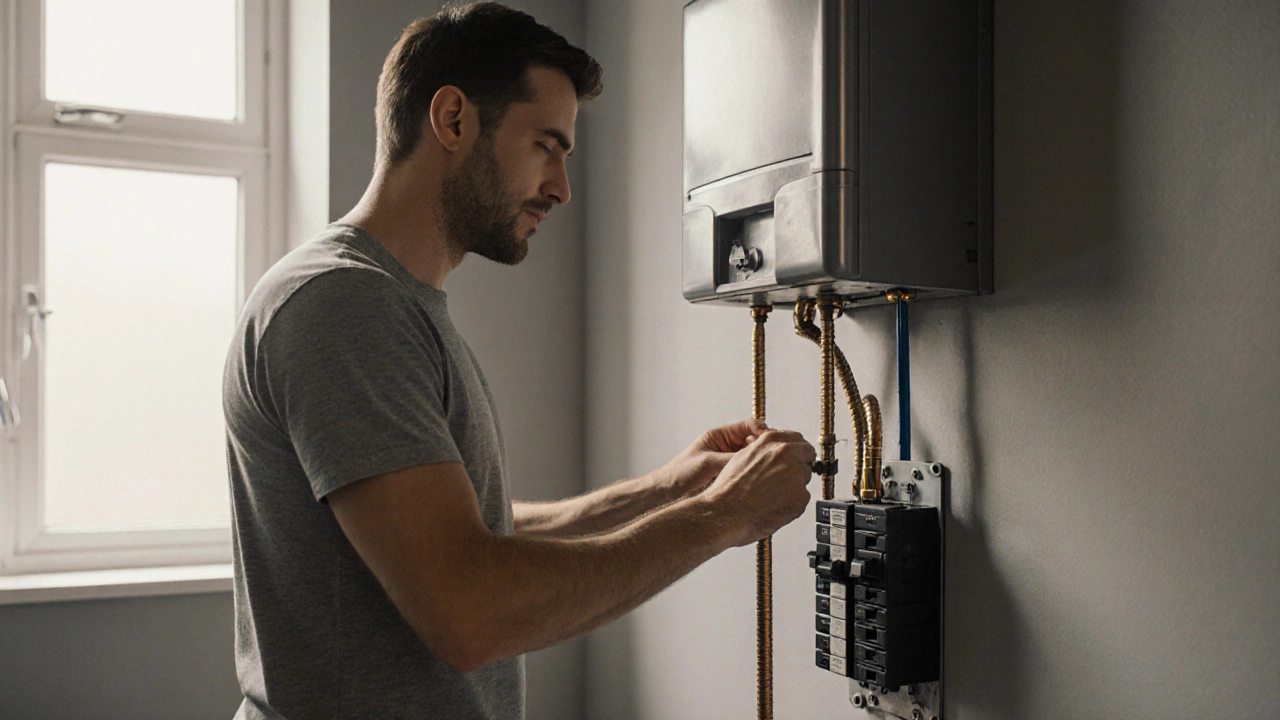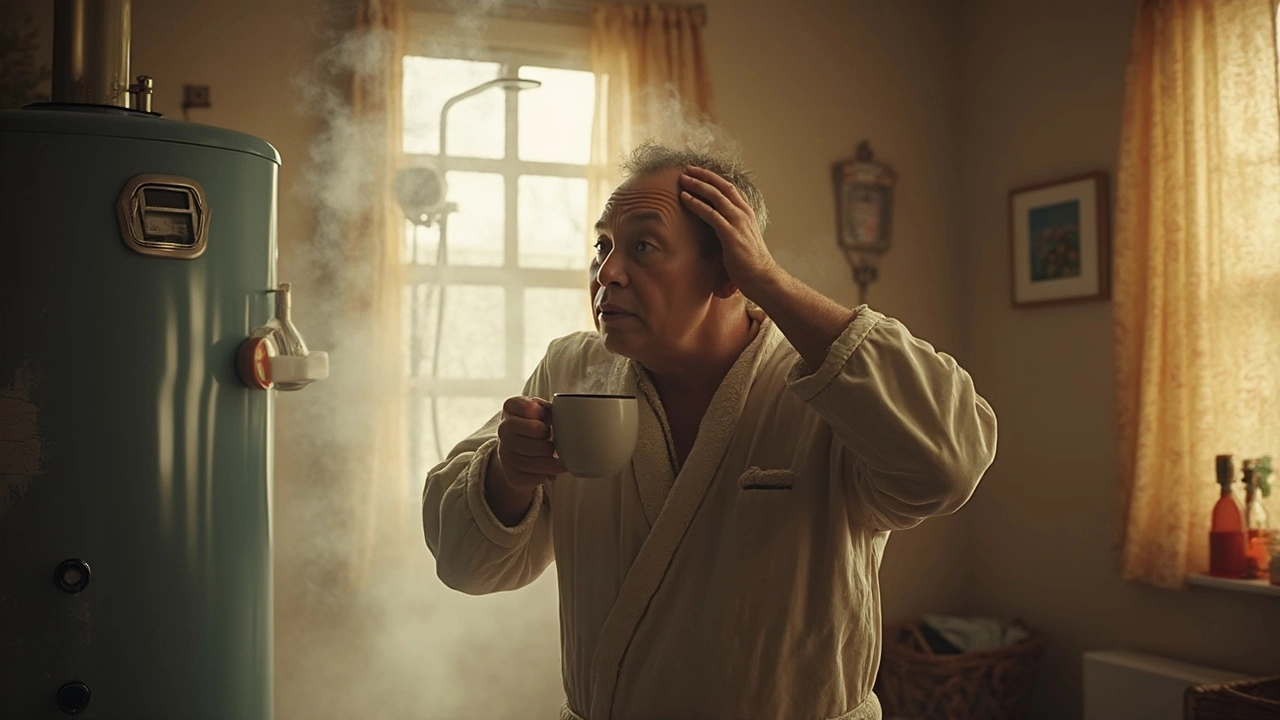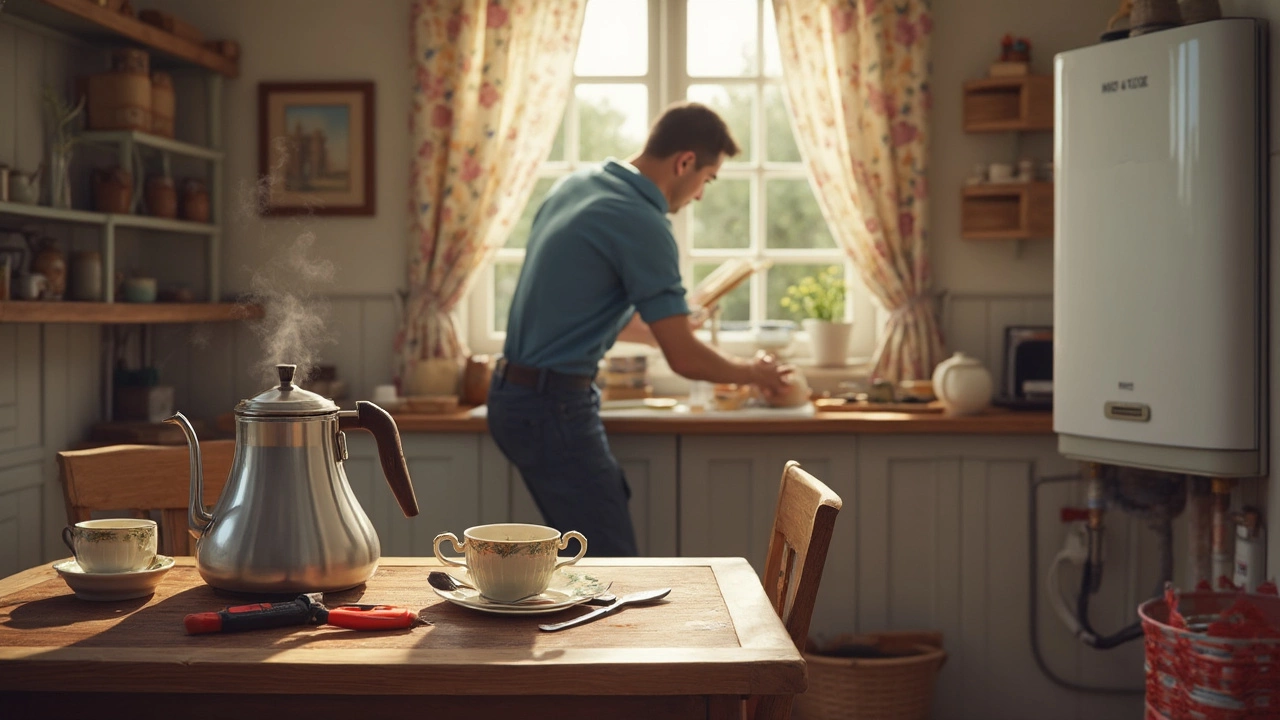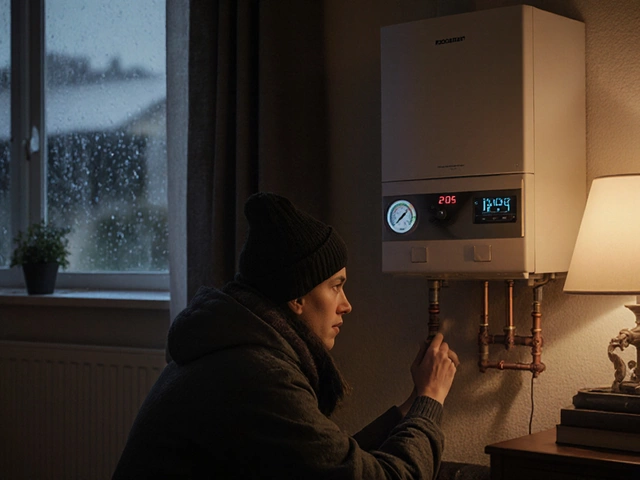Turning on the tap and getting nothing but cold water? That’s a moment nobody enjoys—especially when it happens right before a shower in the morning. Hot water issues show up out of nowhere, so it's normal to feel a bit stuck about where to even start fixing it.
The good news: you can figure out the problem fast with just a little know-how. Most hot water problems are caused by a few common culprits, whether you've got a gas heater, an electric model, or even an on-demand system. You don’t always need fancy tools or deep plumbing experience—sometimes the solution is as simple as flipping a switch, pressing a reset button, or lighting a pilot light.
Always start with safety. If you hear strange noises, smell gas, or spot leaks, stop right there and call for help—don't risk it. But if it all looks safe, you can check a few simple things yourself that could save you a service fee. This article breaks it all down step by step, using straightforward language and real advice you can use right now. Because nobody's got time for icy showers.
- Quick Safety Check: Before You Touch Anything
- Is It Really the Water Heater? Simple Tests
- Power or Fuel Problems: What Fails Most
- Thermostat and Settings: Easy Adjustments
- Common Parts That Break and What to Do
- When to Call a Pro (And How to Choose One)
Quick Safety Check: Before You Touch Anything
Before digging into repairs on a hot water not turning on problem, you’ve got to play it safe first. Water heaters might look simple, but they pack a punch — electricity, gas, hot water, and pressure all in one spot. Mess something up, and you can get hurt, or end up with a flooded basement.
Here’s what to check right off the bat:
- Smell for gas (natural gas or propane heaters): If you catch even a hint of that “rotten egg” scent, stop immediately. Open a window, leave the area, and call your utility company. Gas leaks are no joke and can cause explosions.
- Check for water leaks: Look for puddles or dripping under and around the water heater. Water on the floor isn’t just a pain—it’s a sign you might have a burst tank or leaky connection that can lead to serious water damage.
- Cut the power (for electric heaters): Find your breaker panel and flip the switch marked “water heater” to off. If the panel isn’t labeled, better to take the time to check — the wrong wire can bite.
- Check the temperature setting: If you see the dial set above 120°F (49°C), dial it back. Most heaters run best between 120-130°F, and anything hotter risks burns and extra wear.
- Let the unit cool (if recently used): Water heaters hold heat for hours. Touching pipes or the tank when they’re hot can burn skin fast.
- Unplug it (if it’s a plug-in unit): For smaller electric models, pulling the plug makes sure you’re not getting zapped while checking parts.
Just to give you an idea of why these checks matter, here’s a table with some real numbers on accidents:
| Hazard Type | U.S. Home Incidents Per Year | Potential Result |
|---|---|---|
| Gas Leaks | ~4,200 | Fires, explosions, hospital visits |
| Water Leaks | ~250,000 | Floods, costly repairs |
| Electric Shock | ~1,000 | Serious injury or worse |
| Hot Water Scalds | ~30,000 | Burns, ER visits |
If everything checks out and nothing smells, leaks, or sparks, you’re probably safe to dig in. Just remember, if anything feels off, call a pro right away. Better safe than trying to save a buck and winding up on a statistics sheet.
Is It Really the Water Heater? Simple Tests
Before you start hunting for parts or worrying about complicated repairs, let’s make sure the problem is actually your hot water not turning on—and not something else messing with your shower or sink. Lots of times, people blame the water heater when there’s actually an easy fix somewhere else in the house.
Start with these quick tests:
- Check more than one tap. Is only one faucet running cold, or is it the whole house? If just one spot is a problem, you might have a bad mixing valve, a clogged aerator, or local plumbing trouble—not a busted water heater.
- Try both hot and cold settings. If both are running cold, you could have a main water supply issue, or your home’s cold water inlet valve might be partly closed. If only the hot is out, keep digging deeper.
- Let the tap run for a full minute. Sometimes, pipes need time to deliver hot water, especially in bigger homes or after the heater has been off for a while. If nothing changes, move on to the heater check.
- Is the water pressure normal? Weak hot water pressure but normal cold could point to sediment buildup or a partially closed valve near the heater.
Now, head to the water heater itself. Is the pilot light on (for gas)? Do you hear it running at all? Any flashing lights or clear error signals (for newer electric or tankless systems)? Pay attention to beeping or blinking codes—these sometimes tell you exactly what’s wrong.
If the unit looks dead, double-check your circuit breaker, fuse box, or gas supply valve. Lots of “broken” heaters are really just switched off by accident (especially after power outages or gas interruptions).
If you spot leaks, strange smells, or obvious water damage, skip the DIY and call a pro. But if everything looks normal and you’ve done these tests, you can now be sure you’re working with a real water heater issue—and not just a fussing sink or bad valve somewhere else.
Power or Fuel Problems: What Fails Most
If your hot water suddenly goes MIA, your first suspects should be power or fuel issues. Hot water heaters need electricity or gas to run, and problems here top the list for what knocks them out. So, how do you know if this is your problem? Start by checking the basics.
For electric water heaters, it’s usually a tripped breaker or a blown fuse. Head over to your home’s breaker box and look for a switch labeled 'water heater.' If it’s in the middle or 'off' position, flip it all the way off and back on again. Wait a bit to see if the tank fires up. Still nothing? Some units have their own reset button, usually red and near the thermostat behind a small panel—give that a press if you find it.
With gas water heaters, the pilot light is the big one. If it’s out, you get nothing but cold water. Instructions for relighting a pilot are often printed right on the tank—follow those exactly or look up your model online. You’ll usually need to:
- Turn the gas knob to 'off' and wait a few minutes for gas to clear
- Switch it to 'pilot,' hold down the button, and use the built-in ignitor or a lighter
- Once the pilot is lit and steady, switch the knob to 'on'
Smell gas? Stop right there—get everyone outside and call your utility or fire department. Don’t try to fix that yourself.
Gas water heaters (and even some electric hybrids) often have an emergency shutoff valve. Make sure it’s not accidently closed. Also, double check the thermostat dial on the tank—sometimes they get bumped or turned down way too low, making it seem like your hot water’s out when it’s just set to cold.
A surprising stat: power or fuel issues are behind more than half the calls plumbers get about hot water not turning on. Simple fixes like these can make you a repair hero and save you a chunk of change. If you’ve checked all the above and still have an ice-cold tank, then it's time to look deeper or call in reinforcements.
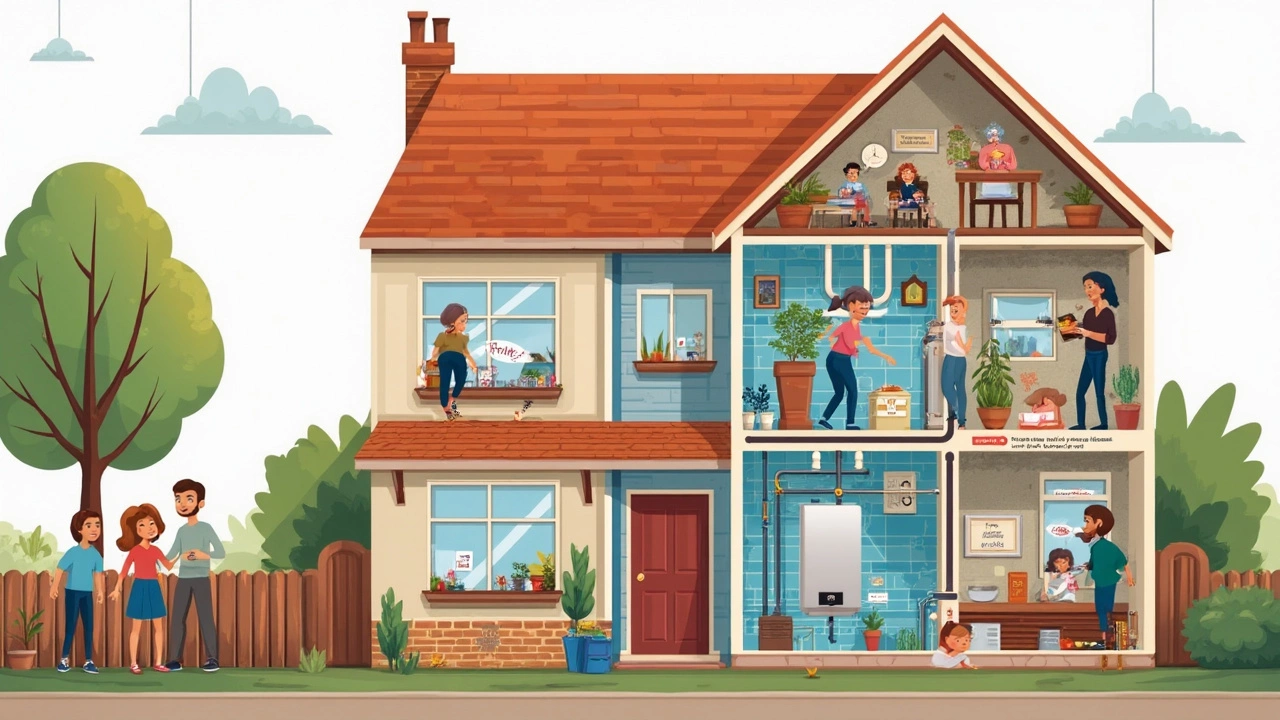
Thermostat and Settings: Easy Adjustments
If your hot water not turning on issue keeps popping up, your water heater’s thermostat or settings could be the troublemaker. The thermostat controls how hot the water gets, and if it’s too low, you’ll just get lukewarm or cold water—even if everything else is working fine.
So where do you check? For most electric water heaters, you’ll find a little panel on the side. Flip the breaker for safety, then unscrew the cover—inside, you’ll spot a small knob or dial labeled “thermostat.” Gas models usually hide the thermostat near the bottom, often behind a metal plate you can pop off. Tankless heaters? You’re likely looking for a digital display with +/- buttons to set the temp.
Setting the water too low is more common than you’d think. Many units ship from the factory with the thermostat at 120°F (49°C), but if yours somehow slipped below 110°F (43°C), you’ll end up with chilly water. Here’s a quick table for recommended hot water settings (the CDC and most plumbers like these numbers):
| Temperature | Risk of Scalding | Bacterial Safety |
|---|---|---|
| 120°F (49°C) | Low | Safe |
| 130°F (54°C) | Medium | Extra Safe (faster bacteria kill) |
| 140°F (60°C) | High | Very Safe |
For most households, 120°F is the sweet spot. It’s hot enough for comfort showers and dishes without wasting energy or risking burns. If you have little kids or older adults at home, staying closer to 120°F really helps avoid accidental scalds.
If you tweak the thermostat and still get only cold water, double-check that it actually clicks into place—it’s easy for these dials to feel tight when they’re not fully set. And always replace the panel before restoring power on electric models. With gas, watch closely for instructions—some have a red “reset” button for an easy reboot.
- Check your manual for thermostat locations, since designs change a bit between brands.
- If your heater has a digital display, try running a test by raising the temp, waiting 30–60 minutes, then testing a hot tap.
- Still cold? The thermostat itself could be dead. Old ones fail often after 10–12 years, or even sooner with hard water.
Quick tip: If you recently had a power outage or power surge, thermostats (especially digital ones) sometimes reset themselves to a default lower temp. Always check after blackout events if you notice a lack of hot water.
Common Parts That Break and What to Do
You'd be surprised how often a simple part is the reason for your hot water not turning on. Water heaters pretty much fail in the same few places, and each has some tell-tale signs you can spot without being a pro.
- Heating Element (Electric Heaters): If your water goes cold suddenly but the unit still has power, odds are your heating element kicked the bucket. Replacement costs can range from $30 to $75 for the part, and it’s a DIY job for a lot of folks. Just remember to shut the breaker off before touching anything.
- Pilot Light or Igniter (Gas Heaters): If the water gets cold and you’re running a gas model, check the pilot. No flame means the water won’t get hot. Sometimes relighting it solves the problem; if not, the igniter or thermocouple might be dead. A new thermocouple is about $10–$20, and installation takes maybe half an hour.
- Thermocouple or Thermopile (Gas Heaters): These safety devices shut off gas if they don’t sense a flame. If they go bad, your burner won’t light, and the water stays cold. Swapping one out is cheap and doable with a screwdriver.
- Thermostat (Both Types): Burning hot one day, freezing the next? The thermostat could be shot. Swapping this is usually easier with electric units. Gas thermostats can be trickier, but it’s not impossible.
- Reset Button (Electric Heaters): Sometimes the high-limit switch trips for no reason. Hitting the reset button—usually behind a little panel—can get things moving again. If it keeps tripping, you’ve got a deeper problem.
You might wonder how often these parts fail. Here’s a quick look based on homeowner call data from major repair services in 2023:
| Part | % of Hot Water Failures (Approx.) | Average Replacement Cost (DIY) |
|---|---|---|
| Heating Element | 36% | $30–$75 |
| Pilot Light/Thermocouple | 29% | $10–$20 |
| Thermostat | 18% | $20–$50 |
| Gas Igniter | 10% | $25–$60 |
| Reset Switch | 7% | $0 (just a reset) |
Always check your manual before you jump in. If you aren’t sure, shoot a picture of the part and take it to a hardware store—staff there usually help point you in the right direction.
When to Call a Pro (And How to Choose One)
Sometimes, fixing your hot water not turning on is just not a DIY job. There are moments when a licensed pro really is your best bet—especially if you’re dealing with leaks that won’t stop, strange burning smells, a tripped breaker that keeps happening, or a hot water not turning on issue that keeps coming back after you’ve reset everything. If you ever smell gas around your heater, that’s an immediate reason to back away and call for help. Gas leaks and electrical problems are serious safety risks.
Here’s a simple rule: if you’re not sure, or if you’re digging into wiring, gas lines, or tank repairs, it’s time for a professional. About 70% of water heater breakdowns in the U.S. require specialized parts or skills—stuff most of us just don’t have lying around the garage.
- Electric water heater tripping the breaker repeatedly – could be a wiring fault that’s a fire risk.
- Water pooling around the base – means possible leaks in the tank itself, which could flood your floor or cause mold.
- Burnt wires or scorched components – major sign it’s no longer safe to DIY.
- Replacement of the whole unit – most homes need a pro for safe, code-compliant installation.
Picking a good repair company matters. Don’t just go for the first name that pops up online. Here’s what actually helps:
- Check for licensing and insurance—it protects you if something goes wrong.
- Look for real, recent customer reviews on places like Google or Yelp—not just the ones on the company’s own site.
- Ask if they specialize in your brand or model. Some heaters are quirky and need special knowledge.
- See if they offer up-front pricing and a warranty on work. No one likes surprise charges.
- Ask about response time, especially if there’s a leak or you’re completely without hot water.
| Issue | % Cases Needing a Pro |
|---|---|
| Gas Leak/Pilot Won't Stay Lit | 85% |
| Consistent Water Leaks | 90% |
| Electrical Short or Burnt Wiring | 95% |
| Heating Element/Thermostat Swap | 60% |
| Strange Noises, Pops, Bangs | 40% |
Here’s the deal—most good companies will give you a rough estimate by phone and answer quick questions without lots of sales talk. If you feel rushed or pressured, move on. And don’t forget to ask neighbors or friends who they've used—word of mouth is worth a lot in this kind of work. Hot water isn’t a luxury—it’s a daily need, so don’t wait too long if a DIY fix doesn’t cut it.
